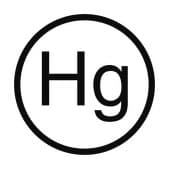M8433
Anti-phospho-c-Myc (pThr58/pSer62) antibody produced in rabbit
affinity isolated antibody, liquid
About This Item
Source biologique
rabbit
Conjugué
unconjugated
Forme d'anticorps
affinity isolated antibody
Type de produit anticorps
primary antibodies
Clone
polyclonal
Forme
liquid
Poids mol.
antigen ~64-67 kDa
Espèces réactives
rat, human, mouse
Technique(s)
immunohistochemistry: 10-20 μg/mL
immunoprecipitation (IP): 2-4 μg/mL
western blot: 0.5-4 μg/mL
Numéro d'accès UniProt
Conditions d'expédition
wet ice
Température de stockage
−20°C
Modification post-traductionnelle de la cible
phosphorylation (pThr58/pSer62)
Informations sur le gène
human ... MYC(4609)
mouse ... Myc(17869)
rat ... Myc(24577)
Description générale
Spécificité
Immunogène
Forme physique
Notes préparatoires
Clause de non-responsabilité

Vous ne trouvez pas le bon produit ?
Essayez notre Outil de sélection de produits.
Code de la classe de stockage
10 - Combustible liquids
Classe de danger pour l'eau (WGK)
WGK 1
Point d'éclair (°F)
Not applicable
Point d'éclair (°C)
Not applicable
Faites votre choix parmi les versions les plus récentes :
Déjà en possession de ce produit ?
Retrouvez la documentation relative aux produits que vous avez récemment achetés dans la Bibliothèque de documents.
Notre équipe de scientifiques dispose d'une expérience dans tous les secteurs de la recherche, notamment en sciences de la vie, science des matériaux, synthèse chimique, chromatographie, analyse et dans de nombreux autres domaines..
Contacter notre Service technique